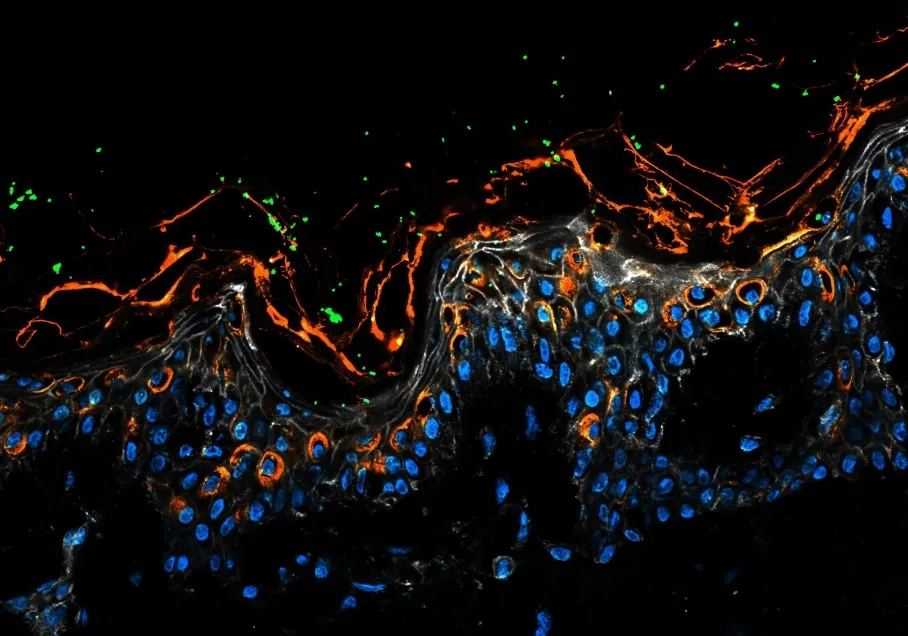How human skin differentiates bacterial friend from foe

In a study recently published in PLoS pathogens, researchers at AIMES, The Center for the Advancement of Integrated Medical and Engineering Sciences at Karolinska Institutet, have identified one of the subtle, yet effective, pathways by which human skin differentiates commensals and pathogens. Understanding these mechanisms opens for new treatment and prevention targets, and particularly ways in which to enhance innate immunity to prevent antibiotic resistant infections.
Can you tell us a little more about the study?

“It shows how human skin differentiates between its commensal microbiota and potentially pathogenic bacteria which cause skin and soft tissue infections”, says Keira Melican, Associate Professor at AIMES, Department of Neuroscience and corresponding author of the article.
A challenge in infection research is to understand how our body recognises the beneficial microbiota compared to those bacteria which pose a threat. The researchers have studied how human skin responded to colonisation by the common commensal bacteria Staphylococcus epidermidis compared to the clinically important methicillin resistant Staphylococcus aureus (MRSA),” Keira Melican continues.

“We identified a specific inflammatory signature when skin was exposed to MRSA. This signal could be linked to tissue resident immune cells, Langerhans cells,” says Julia C. Lang, Postdoctoral researcher at AIMES and first author of the article.
The rise in antimicrobial resistance (AMR) means bacterial infections are becoming more difficult to treat effectively. MRSA is the leading cause of AMR related deaths in developed countries and new prevention and treatment options are needed.
New prevention and treatment
This study was conducted using in vitro human skin models and cell cultures to address interaction between host and bacteria in the human skin environment.
Both immunotherapy and probiotics have been proposed as potential methods to prevent and treat skin infections, and this study addresses both aspects in the human skin environment. A drawback of previous research on skin infections has been the reliance on mouse models. It is becoming clear that mouse skin differs significantly from human, not only in structure, but also in its immune response to bacteria.
Understanding how human skin differentiates commensal from pathogen and which skin cells mediate this differentiation will be critical to ongoing development of new treatments.
The next step
“We want to further understand the signalling pathways in the human skin, using single-cell sequencing and spatial transcriptomics at core-facilities at Karolinska Institutet,” says Keira Melican.
From the bacterial perspective the researchers are focusing on what aspects of the bacteria the skin cells are detecting as they differentiate commensal from pathogen.
The research was funded by The Swedish Research Council (VR) and Novo Nordisk Foundation, with support from AIMES – Center for the Advancement of Integrated Medical and Engineering Sciences at Karolinska Institutet, KTH and Getinge AB.
Publication
Tissue resident cells differentiate S. aureus from S. epidermidis via IL-1β following barrier disruption in healthy human skin.
Lang JC, Brutscher A, Ehrström M, Melican K
PLoS Pathog 2024 Aug;20(8):e1012056
